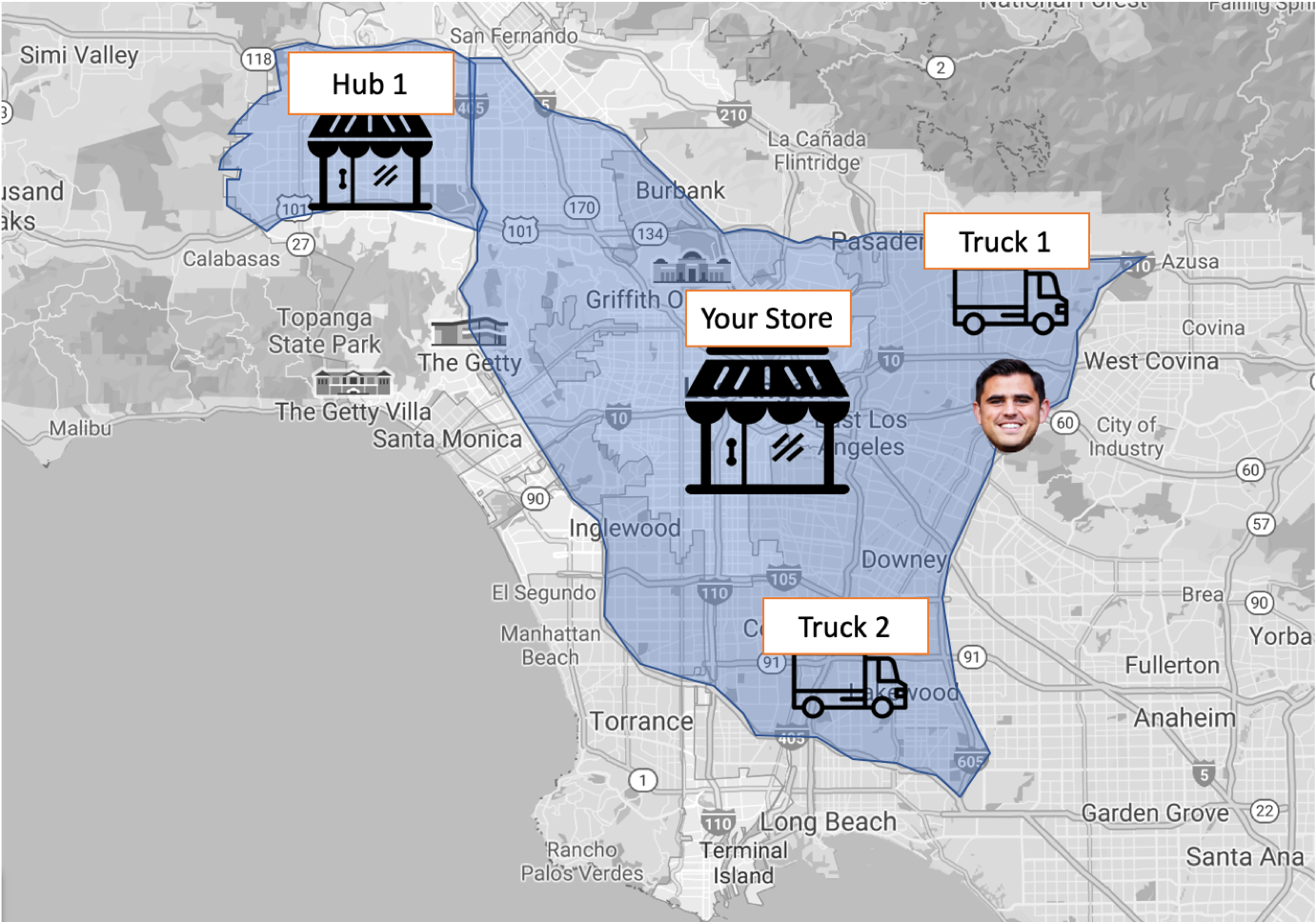🍦Ice Cream vs 🍕 Pizza: The Great Cannabis Delivery Debate
Dynamic delivery is going to take over the world; plan for it.
In California, one third of online cannabis transactions are fulfilled via delivery. And that’s just the beginning.
California is a good case study for delivery operations in cannabis - lots of expansive, sprawling communities; a legal market informed by decades of friendly neighborhood plugs dropping product at your house; and a relatively flexible regulatory environment for last-mile logistics.
California’s market dynamics result in some pretty cool business models, which require our attention.
First, the Expectations ☝️As more states and local governing bodies explore and expand delivery operations (Colorado, Mass, Michigan, and many more), it’s important to level-set our expectations from a consumer and a retailer standpoint. Here goes:
Consumer: I expect to shop for cannabis like I shop for everything else. I want to log on to your website, see a relevant menu, explore products, place an order, then watch my order’s progress as someone brings it to me. That’s it - I don’t care about your tech stack or any of the back-end sophistication - that’s your problem. And I’ll choose the service that offers the best assortment at the best price with the easiest ordering experience.
Retailer: I want to meet my customer’s expectations, regardless of the technical complexity, while respecting my minimum requirements (fees, minimums, lead times) to maintain a positive ROI for every single delivery.
See a theme? There is a certain “just get it done”-ness in this equation.
(FWIW - there is a huge amount of technical complexity involved in dynamic delivery. Your POS must speak to your eCommerce must speak to your fleet management must speak to your payments processor. But again, your customer doesn’t care.)

But…why do people keep talking about ice cream?
The Models 🕺🏻I’m going to break down a few logistical models that we’ve seen in the delivery space. Sometimes I’m using new terms. I’ll address the simplest setup to describe the model. I think it’ll make sense. If it doesn’t, email me.
*Covering my buns: it seems like every county in every state addresses delivery differently - please make sure you are legally allowed to implement these models before doing so.
Pizza 🍕The most traditional and delicious of delivery business models, the “pizza” setup should be intuitive - you have a central hub (usually your store location) from where you package up and dispatch orders. This is how a pizzeria functions - you gotta cook the pie at the shop before you send stuff out.
Delivery zones are usually determined by a radius, specific zip code boundaries, or a custom zone:
Your ordering system should be able to geolocate customers and / or allow them to enter their zip code or address; their location will dictate whether they are in your service area, and whether or not they can place an order.
Pizza with Hubs ⊛Let’s say you’ve mastered the pizza model with your LA location (congrats!), and your operations are growing - and you’ve heard that some folks in the San Fernando Valley are feeling left out. Time to buy some warehouse space and a delivery-only license to increase your service area.
Now, you’ll employ the same kind of model, just with two pizzerias (aka dispatch locations).
This simple change presents a major complexity in your shoppers’ online journey - now, the question is not a simple yes / no based on shopper location - now, you must show them the relevant menu based on their location. Your system must be dynamic.

Ice Cream (or “Kit”) 🍦Okay, now you’re really scaling, and people keep placing orders. In your jurisdiction, you can hold a certain level of inventory in a delivery truck while it’s out on the road - and you want to make this inventory available to your customers, to decrease fulfillment time and increase the number of deliveries per truck per hour.
You, friend, need some ice cream.
The ‘ice cream’ (or ‘kit’) model should be intuitive based on its name as well - the ice cream man doesn’t sit in a depot all day waiting for people to order - he throws on some tunes and drives around.
Hybrid 🌱We do love a nice hybrid in this industry, don’t we? Most of the time, real operations turn out to include a portion of many different delivery models.
For an explicit example - consider that you may want to offer both Express and Next-Day orders. Express orders can route to your truck menus - because that customer wants product right now; Next-Day can route to Your Store inventory, which is necessarily larger than inventories in trucks. You get the point; lots of ways to slice it.
The Tech 🖥To support any / all of the above, your eCommerce partner must be excellent at integrations; and your POS must be sophisticated enough to reveal the location of various inventories. ASK FOR REAL-WORLD EXAMPLES OF THESE MODELS if you are vetting tech partners.
Or just call me.
Cheers.







